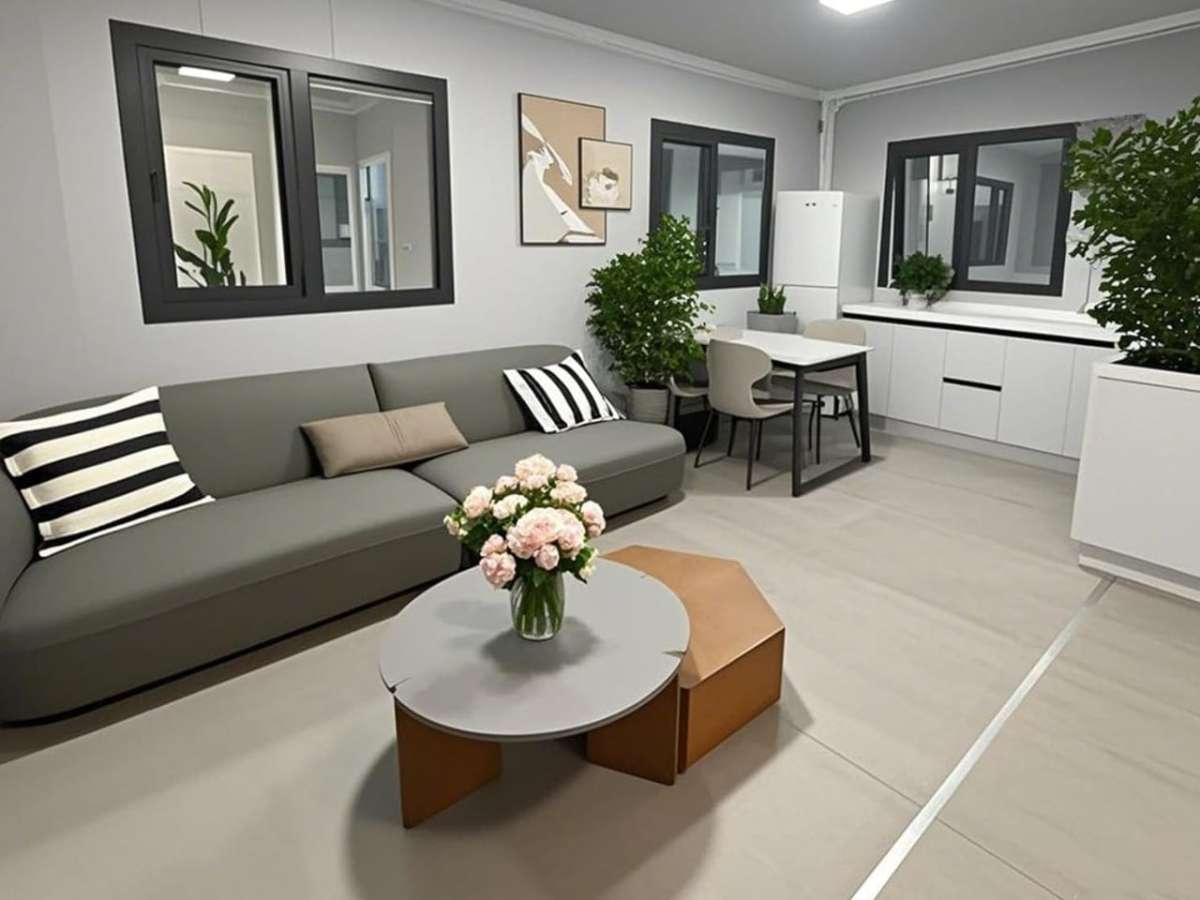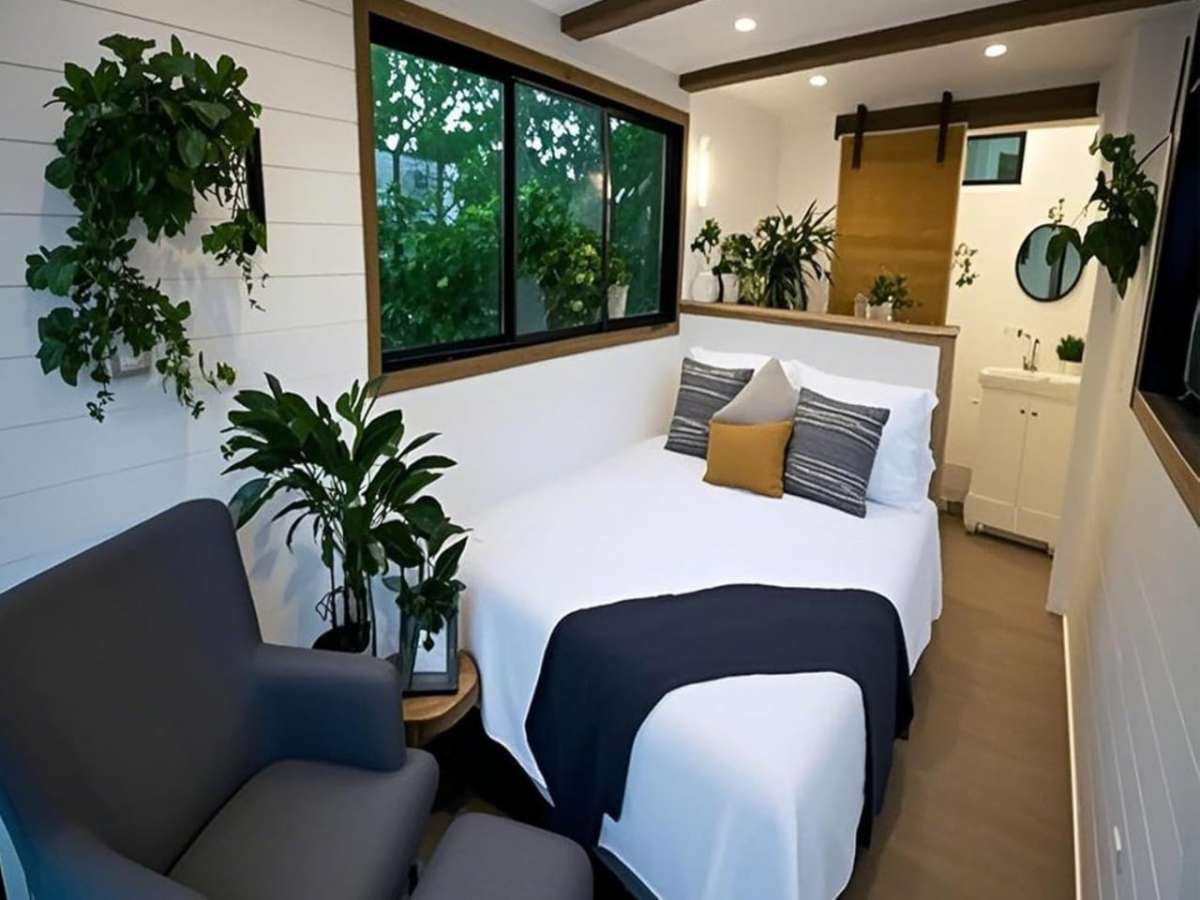
At $17,999, this solar-powered tiny house costs less than most new cars but delivers something far more valuable: a legitimate path to off-grid living without the typical six-figure price tag. After reviewing dozens of prefab housing solutions over the past three years, I can tell you that finding a weather-resistant, fully equipped tiny home under $20K is rare. Finding one with integrated solar panels at this price point is nearly unheard of.
⬇︎ Jump to summary (pros/cons)
Regular Price: $17,999
Deal Price: $17,999
Where to buy: Buy on Amazon
The Generic solar-powered tiny house checks boxes that matter for actual off-grid use. You get a working kitchen, a full bathroom with sink, shower, and toilet, massive windows for natural light, and solar panels that can power basic appliances and charge devices. The steel frame and sandwich wall insulation handle temperatures down to -40°F according to the manufacturer, which means this isn’t just a fair-weather solution.
Why This Matters for Off-Grid Living
Most tiny houses fall into two categories: affordable but impractical shells that require thousands in additional work, or turnkey solutions that cost $50K-$100K and defeat the entire purpose of downsizing. This sits in a sweet spot I rarely see. You get structural integrity, functional utilities, and renewable power in one package that costs less than a decent used truck.
The solar integration is the standout feature here. Instead of buying the structure and then budgeting another $5K-$10K for solar installation, the panels come factory-mounted on the roof. For someone looking to set up on rural land or create a mountain retreat, that’s one massive variable eliminated. You can focus on site prep and hookups instead of coordinating multiple contractors.
That said, the solar capacity has real limitations. You’re powering basic appliances and charging devices, not running central air conditioning or electric heating systems. The panels handle lights, a laptop, maybe a mini-fridge, but high-draw appliances will drain the system fast. If your off-grid vision includes modern climate control, you’ll need supplemental power sources or serious battery capacity upgrades.
The customizable interior layout adds practical flexibility most prefab options skip. You decide how many bedrooms, where the kitchen goes, and how the bathroom fits into your floor plan. That level of personalization typically comes with custom builds that start at $40K minimum. Getting it at this price means you can actually design the space around your specific needs rather than adapting to someone else’s poorly planned layout. The large windows and roomy deck extend your usable space outdoors, which matters when you’re working with limited square footage inside.
Real-World Applications and Honest Limitations
This works for specific scenarios where traditional housing makes no sense. Mountain property owners who want a base camp without building a full cabin. Remote workers who inherited rural land and want to test off-grid living before committing to a larger build. Older parents who want to stay close to family without moving in permanently. Writers, artists, or anyone who needs dedicated creative space away from their main home.
The wooden accents and light exterior help it blend into natural settings rather than looking like an industrial shipping container dropped in the woods. Aesthetics matter when you’re trying to create a retreat, not just shelter. The prefab construction means faster setup compared to traditional building, though you’ll still need proper site preparation, foundation work, and utility connections that add significant cost beyond the $17,999 base price.
Weather resistance becomes critical in real off-grid scenarios. The steel frame provides structural stability in wind. The sandwich wall panels offer legitimate insulation, not just thin barriers. The brand claims -40°F insulation, which if accurate means this handles serious cold. You’ll likely want supplemental heating for extended winter use, but the core structure won’t fail when temperatures drop.
Here’s where the Generic brand status becomes a concern. You’re buying from a company without established customer support history or proven warranty track record. When something goes wrong six months in, you’re navigating uncertain support channels. Established tiny house builders charge more partly because they stand behind their products with real service infrastructure. At this price point, you’re accepting some risk in exchange for significant savings.
The $17,999 sticker price is just the starting point. Shipping and delivery fees for a structure this size add thousands. Site preparation, foundation, utility hookups, and assembly labor aren’t included. Local zoning and building codes may prohibit tiny house installation entirely, which means researching regulations before ordering. The total investment could easily hit $25K-$30K once you factor in everything required to make this livable.
What Works and What Doesn’t
PROS:
- Integrated solar panels save $5K-$10K in separate installation costs
- Full bathroom and working kitchen provide turnkey utility infrastructure
- Steel frame and -40°F insulation handle real weather conditions
- Customizable interior layout allows personalized space design
- Large windows maximize natural light in compact space
- Roomy deck extends usable living area outdoors
- Prefab construction enables faster setup than traditional building
- Light exterior and wooden accents blend into natural settings
- Price point under $20K makes off-grid living financially accessible
- Weather-resistant design suitable for year-round use
CONS:
- Generic brand lacks proven customer support and warranty infrastructure
- Solar capacity insufficient for high-draw appliances like AC or electric heating
- Hidden costs for delivery, site prep, foundation, and assembly add thousands to base price
- Local zoning regulations may prohibit tiny house installation
- Limited square footage requires minimalist lifestyle adaptation
Should You Actually Buy This?
If you own rural land and want affordable off-grid living space, have a large property and need guest quarters without major construction, or want to test minimalist living before committing to a full tiny house build, this deserves serious consideration at $17,999. The combination of solar integration, full utilities, and weather resistance at this price is genuinely hard to find. Just budget realistically for the complete installation cost.
Regular Price: $17,999
Deal Price: $17,999
Where to buy: Buy on Amazon
Skip this if you need primary housing that meets urban building codes, want modern amenities like central air conditioning and full-size appliances, or lack the land and permits required for tiny house installation. Also skip if you need established brand reputation with proven customer support and warranty service.
Bottom Line
At $17,999, this represents legitimate value if your situation matches its capabilities. You need land, permits, realistic expectations about off-grid limitations, and willingness to handle site prep and utility connections. The solar panels alone typically cost $5K-$10K installed, so getting them integrated with a weather-resistant structure at this price makes financial sense for the right buyer.
The steel frame and insulation specs suggest this can handle real weather, not just mild climates. The customizable interior means you’re not locked into someone else’s poorly planned layout. The full bathroom eliminates one of the biggest challenges in tiny house living. Just remember you’re buying structure and basic utilities, not turnkey luxury living. Do your homework on local regulations, understand the total cost including site prep and delivery, and make sure this actually fits your off-grid plans before ordering.




